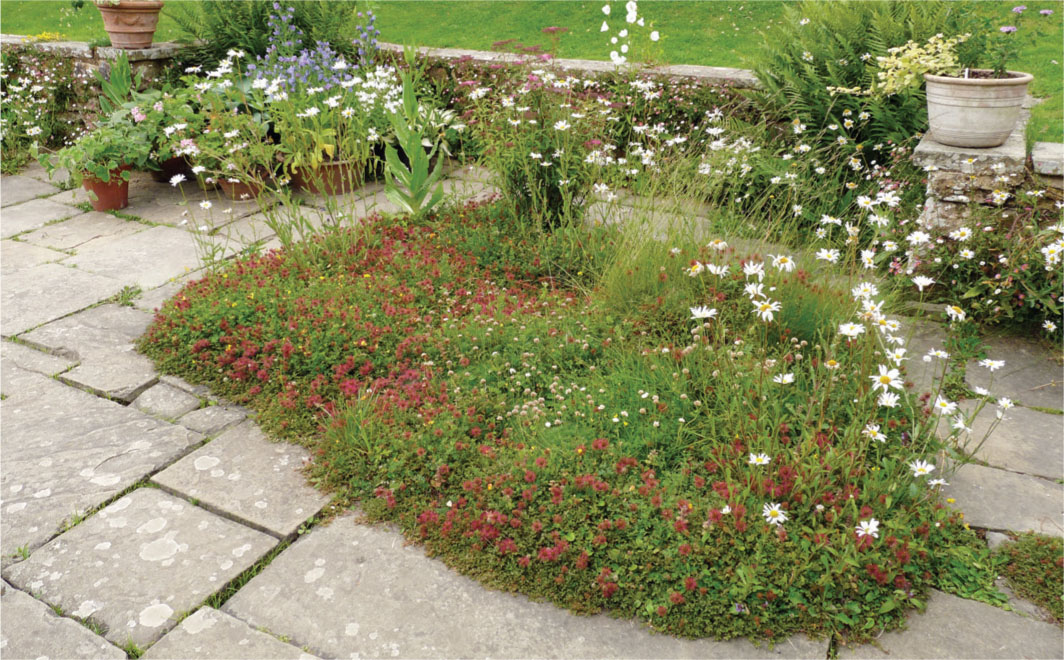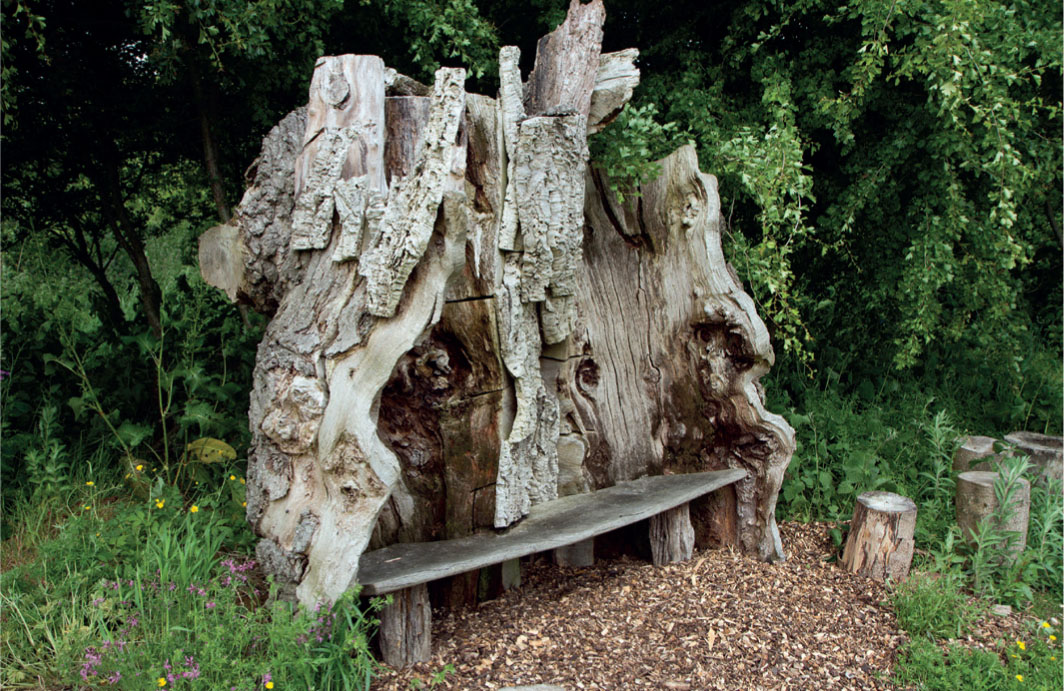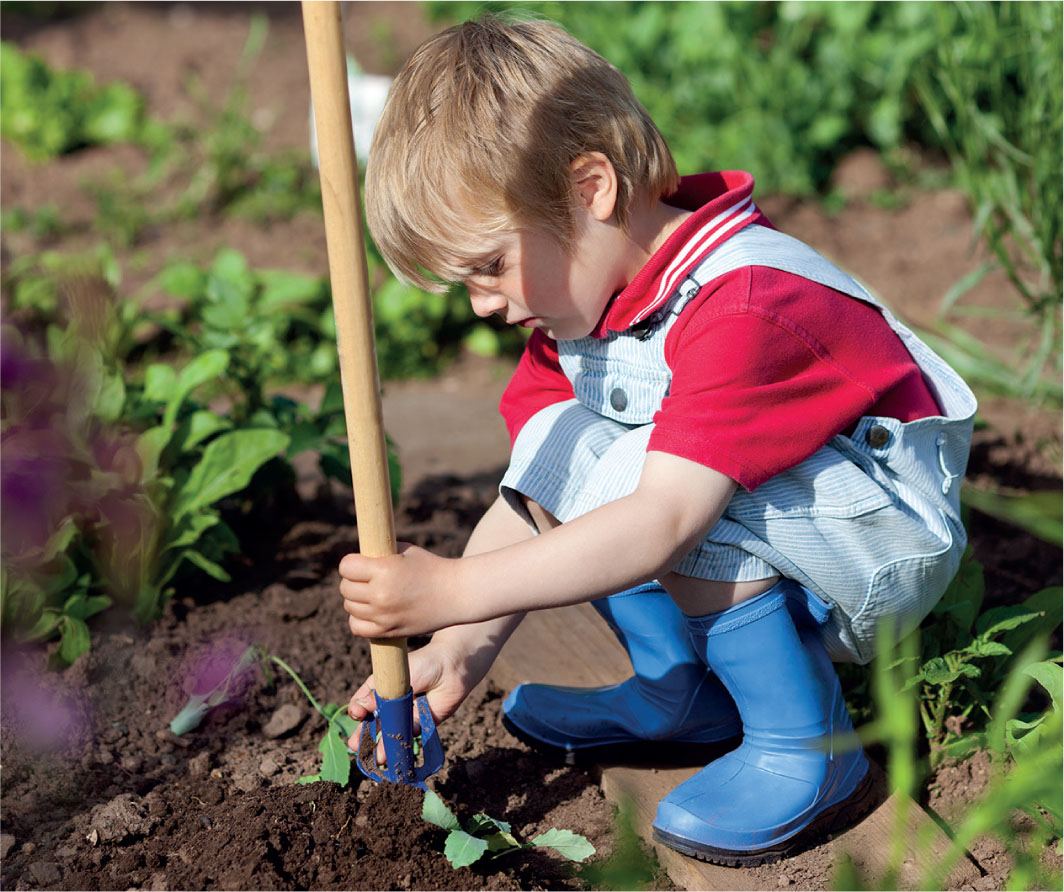
Gardening for Wildlife in the Leisure Zone
We all need parts of the garden where we can relax, play, be sociable and snooze. It might be the lawn, or perhaps the patio or some benches. But that doesn’t mean that nature has to be excluded. With a bit of imagination, wildlife can have a ‘timeshare’ in those places when you’re not around.
Lawns
The biggest area we usually give over to leisure is our cherished lawn. Part sunbathing arena, part sports field, part stage for garden parties, they are nature’s amazing, living, green carpet.
There are lots of creatures that will be longing to come and use it too. Unless you absolutely demand a perfect sward with immaculate rolled stripes, then a meadow option such as this unmown geometric block (below) will work wonders for wildlife such as meadow butterflies and beetles. Even just lifting the mower blades a notch compared to your usual mowing regime will give that bit of extra microhabitat and will also help your lawn cope with droughts. But whatever you do, don’t blast it with chemicals. For full guidance, see here.


Patios
For those times of year when the lawn is too wet and uninviting, or in gardens where there is no lawn, the patio becomes our social hub in the garden. But did you realise it can almost do the same job for wildlife, too?
It’s the perfect place for an array of pots (above) where you can tend bedding plants, climbers and even trees and vegetables. With a pergola or arbour built over the top, you could grow wisterias, honeysuckles or Hop overhead as a natural roof, creating sun-dappled areas on the patio.
If the patio is paved, you could go one step further and actually lift up the odd slab or two and plant up the gaps (below), maybe with something like low-growing thymes or Chamomile.


Seating
We all like to have somewhere to rest after an exhausting session in the garden, from where we can admire our handiwork. But could a seat be more than that?
Think laterally and it is possible to turn it into a place for wildlife, such as this one (above) where the back is made from dead wood, perfect for wood-boring insects.
Or use slabs to make a lichen-encrusted, dry-stone bench (below). Another idea for a seat is to create an arbour over the top, up which you can grow wildlife-friendly climbers. What could be more salubrious than being wafted with the smell of fragrant honeysuckle while relaxing in your bower?
Or what about a turf bench where insects and worms can live? They were popular in medieval times, and there are plenty of paintings that depict the Madonna on one. If it was good enough for her…

Child’s play
As a child my garden was probably the place where I was happiest. My parents might have described it as ‘most excitable’! Given free rein to be inquisitive, a garden full of wildlife can be a constant source of wonder and discovery for the young…and young at heart.
So don’t content yourself with just putting in a metal swing and climbing frame. Be creative. Important aspects of play are exploring and creating imaginary worlds, so why not create a jungle den out of living willow or wildlife-friendly shrubs?

Give children the opportunity to grow wildlife-friendly plants themselves. They love anything that grows quickly and easily, has big, bold flowers or is edible. Ideal plants include:
 sunflowers (great for a growing competition)
sunflowers (great for a growing competition)
 snapdragons (to watch bees climbing inside the dragons’ jaws)
snapdragons (to watch bees climbing inside the dragons’ jaws)
 Nasturtium (such a cheerful rambling plant)
Nasturtium (such a cheerful rambling plant)
 sweet peas (for the beautiful smell)
sweet peas (for the beautiful smell)
 Borage (just as the bees drink the nectar so the kids can eat the flowers)
Borage (just as the bees drink the nectar so the kids can eat the flowers)
 and strawberries (because they’re scrummy, as any slug will tell you).
and strawberries (because they’re scrummy, as any slug will tell you).
In addition, kids in general are far more inquisitive and excited about creepy-crawlies than adults are. Make a wildlife sunbed so they can enjoy discovering the world underneath, build log piles (see here), and mow a maze in your lawn allowing the grass in between to grow up long (see here).
And, of course, make some kind of pond. You will need to consider safety, but it will be the thing that fascinates them the most.